The Holy Sepulchre in Görlitz is one of the city’s most important sights. It is a scaled-down copy of the original in Jerusalem and was built as a religious work of art.
Having arrived in Görlitz at the end of my pilgrimage on the Via Sacra, after visiting the church of St Peter and Paul, a visit to the Holy Sepulchre was still on my list of sacred places in the city. Unconsciously, I chose exactly one part of the path that leads as the Way of the Cross from the crypt of the church to the Holy Sepulchre.
The Way of the Cross leads past the stations:
- Jesus Bakery:
The bakery is said to mark the place where Jesus collapsed under the weight of the cross. - Garden of Gethsemane (Mount of Olives):
On the Mount of Olives in Görlitz there is a small park that nestles on a small slope. From here you have a beautiful view over the city. - Jesus’ Prayer Place (Disciples’ Meadow)
- Kidron Valley (Lunitz Valley)
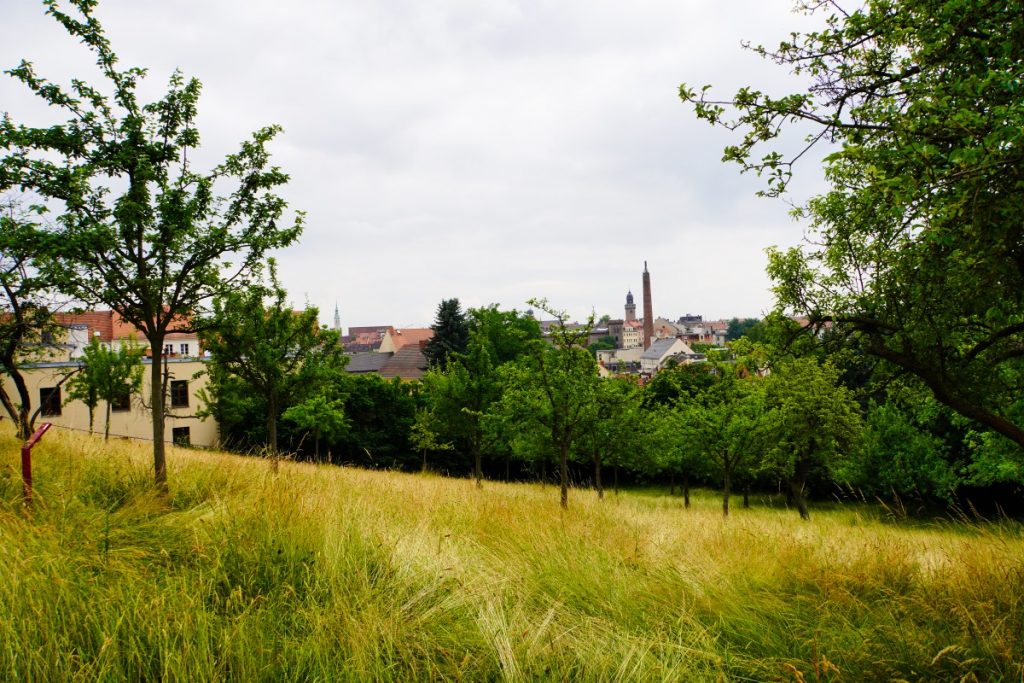
Every year on Good Friday, the path of the visitors to the resurrection celebration in the Holy Sepulchre leads along these stations.
Once you reach the complex, you can visit a scaled-down replica of the Moorish-Romanesque Holy Sepulchre and the Anointing Chapel with a sculpture by Hans Olmützer.
Why is the Holy Sepulchre in Görlitz?
Construction of the complex began in 1480, the year in which the city council of Görlitz applied to the Bishop of Meissen for permission to build a stone chapel of the cross. In 1504, the bishop consecrated the chapel with a church service.
But why did the council have the chapel built?
There are few verifiable facts about this, but there is a legend.
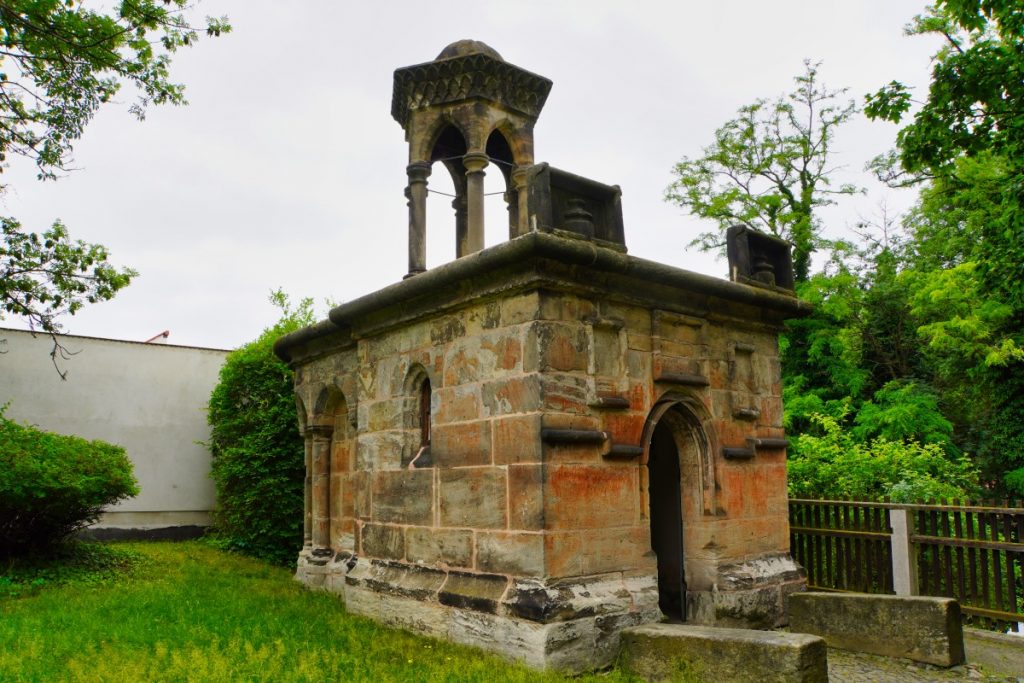
Legend of the origin
Georg Emmerich lived in Görlitz from 1422 to 1507. The son of the mayor at the time got the neighbour’s daughter Benigna of the councillor Horschel pregnant. He refused to marry her, however, although the young woman’s parents demanded it. One reason was certainly that the two families not only belonged to different religious camps, but also to different political camps. Who made the decision to refuse the marriage, whether the mayor or the son, is not entirely clear. In any case, the consequences of the misstep slowly became visible and Georg Emmerich was the talk of the town. He had to react and so he decided to make a pilgrimage to Jerusalem in 1465, which was supposed to wash him clean of sin.
So he set out with his retinue and visited the Holy Sepulchre in Jerusalem, and there he was even knighted of the Holy Sepulchre.
It is said that Emmerich was so impressed on site that he developed a plan that he later wanted to implement back home. To do this, he made sketches of the burial chapel. He took down all the measurements, even the distances between the various sites.
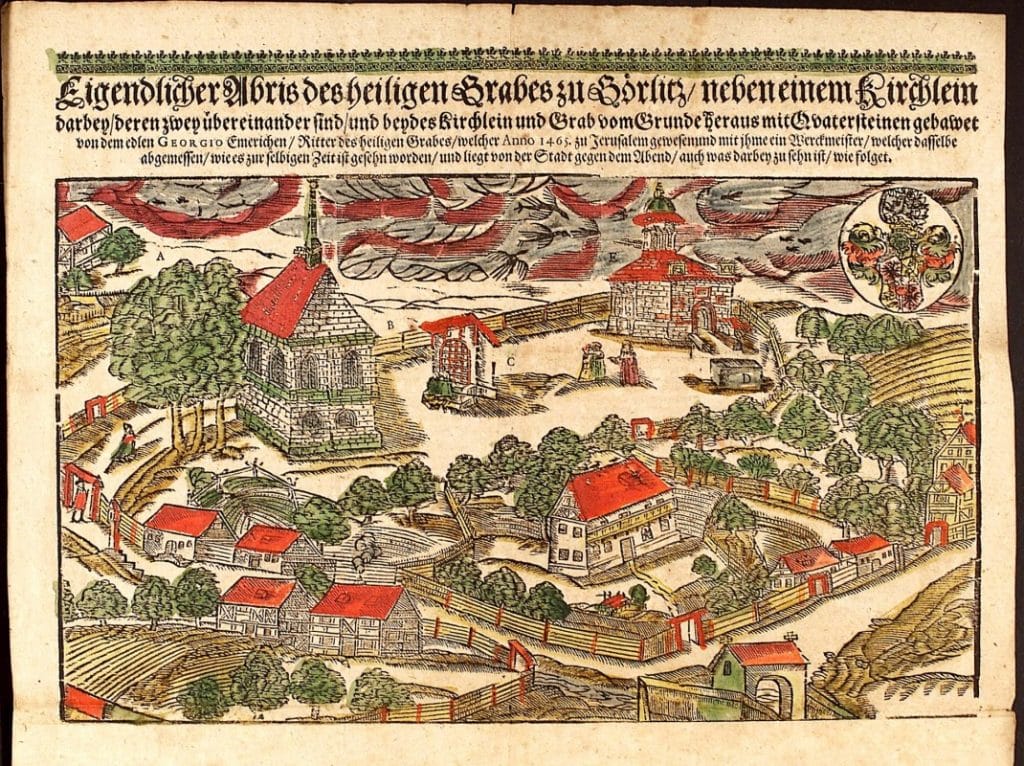
After his return to Görlitz, the “misstep” was atoned for and Georg Emmerich married the wealthy Barbara Knebel. He later took over his father’s mayoralty, successfully traded in cloth, grain and metal, and owned twenty manors and villages in the region. He became the most successful merchant in the town.
Over time, he began to look for a place where he could implement the plan he had made in Jerusalem. He wanted to rebuild the Holy Sepulchre. He found a site outside the city. The distance to the St. Peter and Paul Church was just under 1000 steps. This corresponds to the length of the Way of the Cross from Pilate’s Palace to Mount Golgotha. The site was on a hill similar to the hill in the Promised Land and even had a stream running through it.
In 1481 he had the copy of the Holy Sepulchre built to scale. Although scaled down, copies of the Chapel of Adam and Golgotha, the Chapel of the Anointing, the Kidron brook, the Mount of Olives, the Disciples’ Meadow and the Gethsemane olive grove were created.
Holy Sepulchre – a tour
After crossing the entrance area with the ticket office, a few steps lead up the small hill. A path leads to the individual buildings on the grounds.
My way led me first to the Anointing Chapel.
The Anointing Chapel
A small building that is closed with an ornamental lattice is the Anointing Chapel in the Holy Sepulchre of Görlitz.
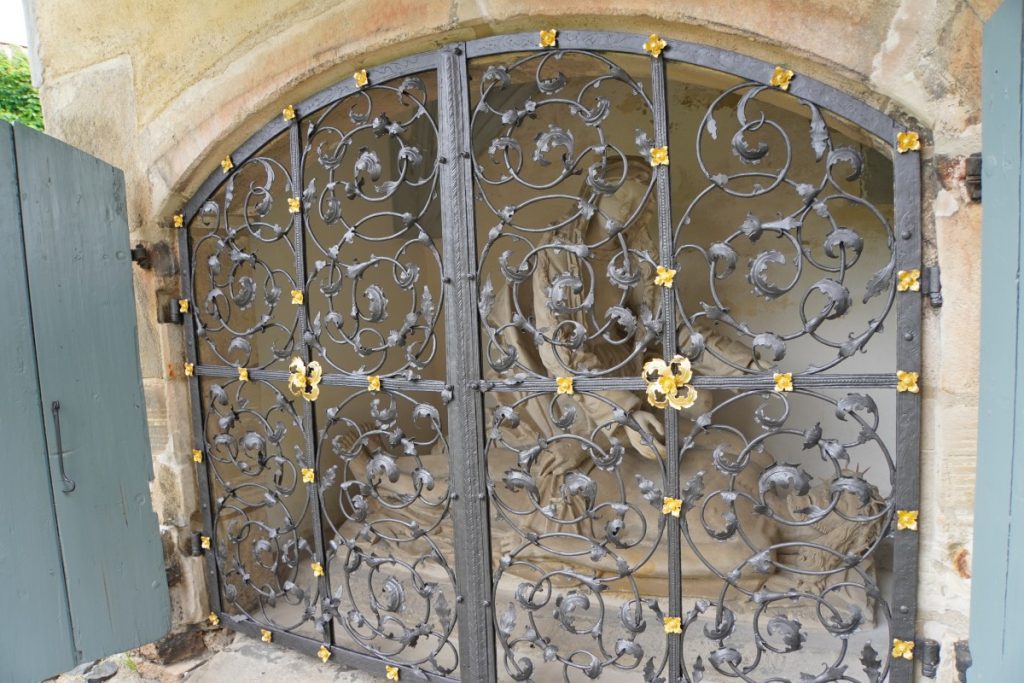
If you look through the grille, you will discover a sculpture from the year 1500, made by Hans Olmützer. The work of art shows Mary sitting bent over Jesus, weeping. Under the figure is the saying: “O mater Dei, miserere mei, Jesu Christe, propicius mihi esto”. This means as much as: O Mother of God, have mercy on me; O Jesus Christ, have mercy on me.
Unfortunately, it is difficult to get a close look through the grille and so I was drawn further into the double chapel.
The double chapel “Zum heiligen Kreuz” (To the Holy Cross)
The late Gothic double chapel is a simple rectangular structure with a pointed roof and is divided into the lower room of the Adam’s Chapel and the upper room of the Golgotha Chapel.
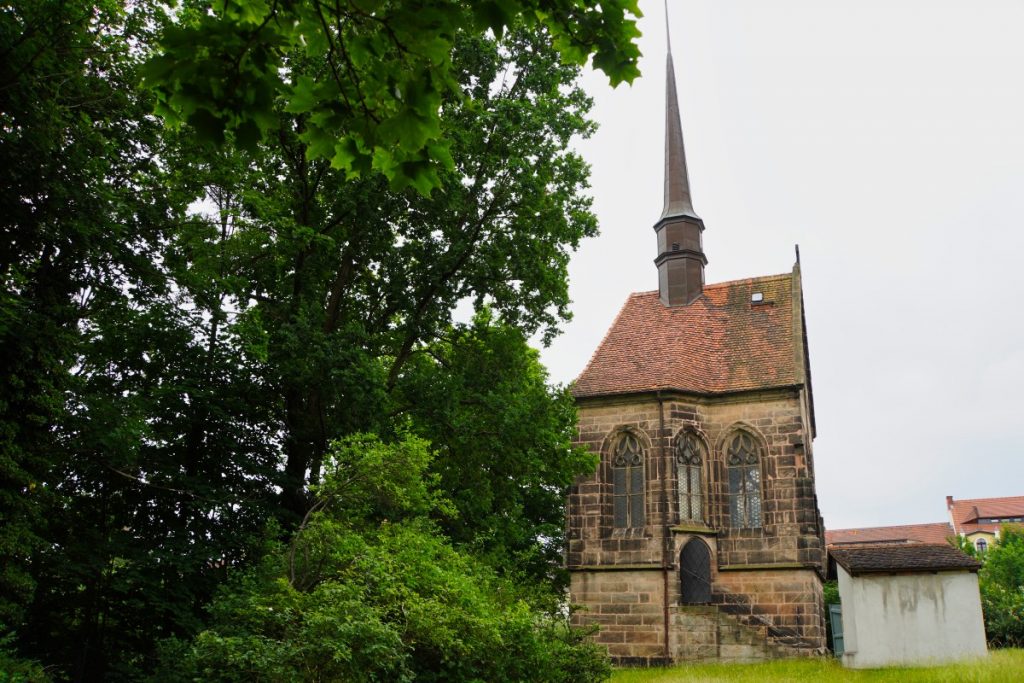
First I enter the Adam’s Chapel. On the left side of the wall, the first thing that catches my eye is an epitaph of the Emmerich family. A very beautifully designed plaque, hung in 1578 by one of Emmerich’s grandsons.
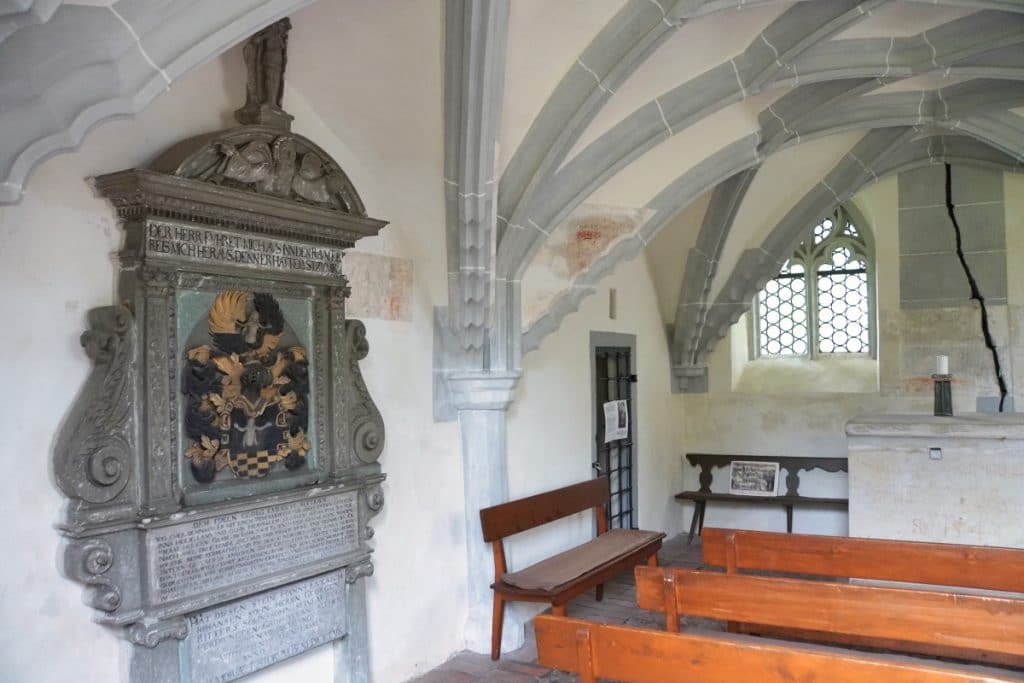
On the east wall is an unadorned box altar symbolising Adam’s tomb. I discover a long crack in the wall behind it. This is artificially created and refers to the statement in Matthew’s Gospel according to which there was an earthquake at the hour of Jesus’ death that created a crack in the rock.
The Golgotha Chapel is reached via an external staircase. Light shines into the square room through windows, making it seem much brighter and friendlier than the Adam’s Chapel below.
In the chapel, a stone threshold represents the rock that is visible in Jerusalem in the chapel. I discover three holes in the threshold, which are meant to remind us of the three crosses on Mount Golgotha. At the middle hole is the inscription INRI carved into the floor and a bronze ring surrounds the hole. The cross of Jesus stood in the centre and was flanked by two other crosses. Next to the central hole in the floor runs a gully that belongs to the crack in the rock of the Adam Chapel below.
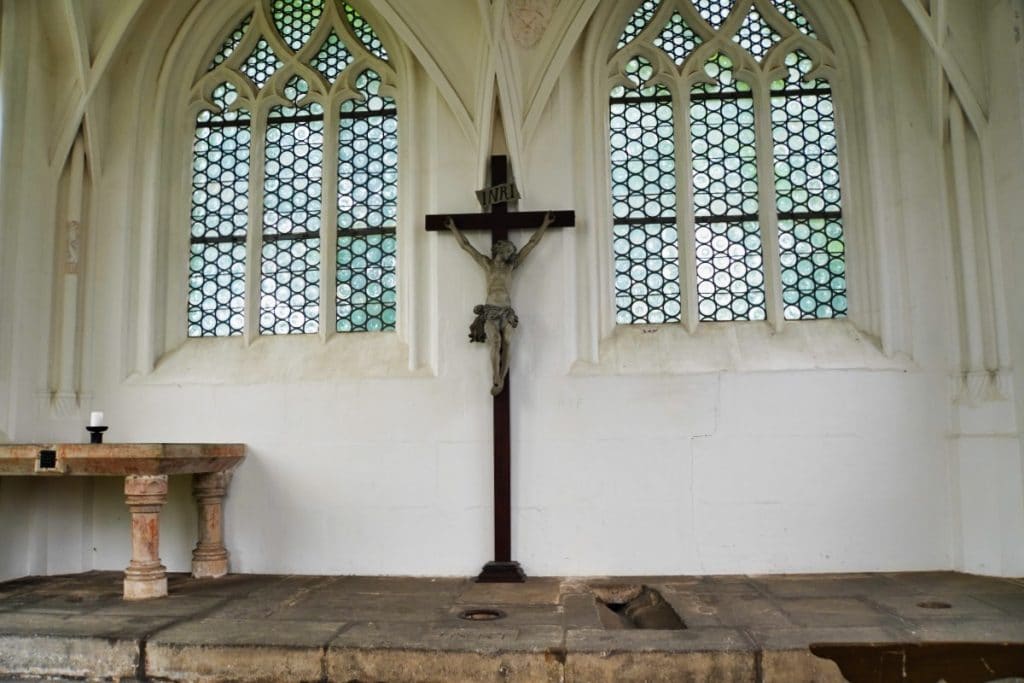
The altar table originally contained a relic of the Holy Cross in the barred reliquary. Today, three dice lie there to commemorate the three soldiers who drew lots for Jesus’ robe.
The burial chapel
Behind the anointing chapel is the burial chapel. Standing in front of the building, the first thing that catches your eye is the small tower that looks like a lantern. The Moorish-Romanesque building is divided into two small rooms.
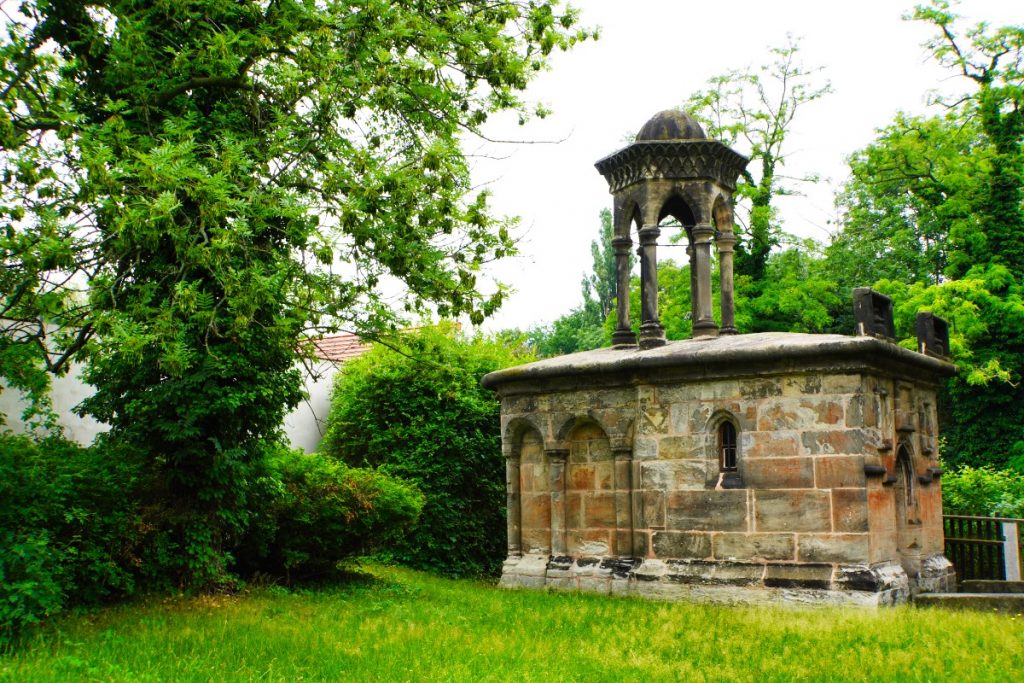
When you step through the small entrance gate, the first thing that catches your eye is a stone. This was the closing stone of the tomb. The two smaller stones are called guard stones.
In the front room is a hand-carved white angel from the Baroque period. It is intended as a reminder of the Easter proclamation at the tomb of the risen Jesus. A small passage, which can only be crossed with a stoop, leads into the burial chamber. The room is windowless and only a little light shines through the doorway into the plain room. It shows the place where Jesus’ body lay.
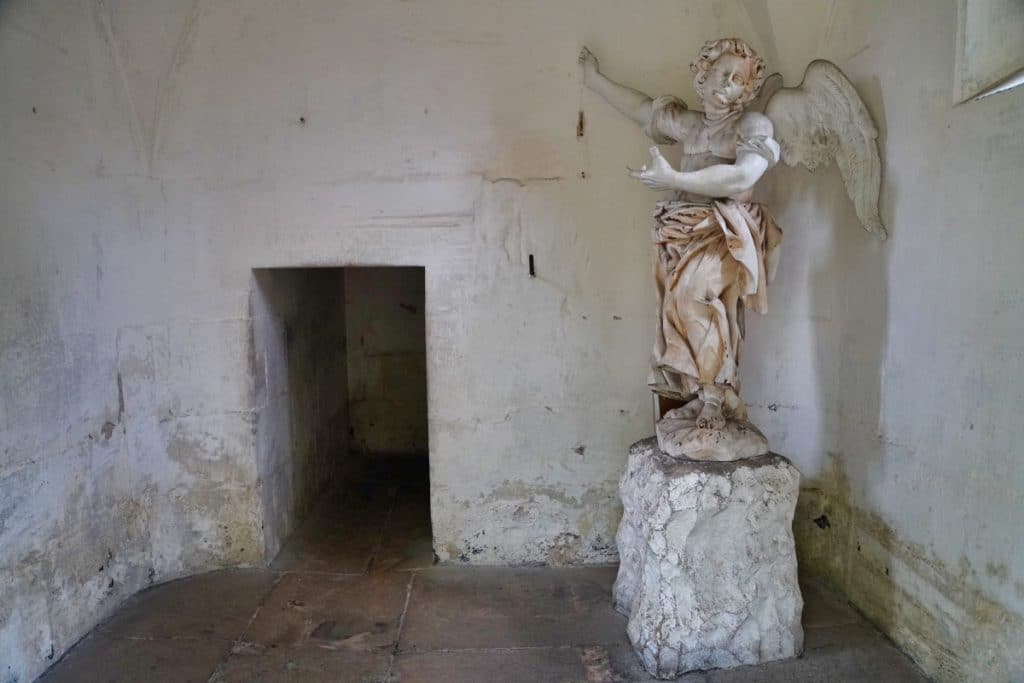
The visit to the Holy Sepulchre in Görlitz concluded my pilgrimage walk on the Via Sacra, which was filled with many unforgettable impressions.
Address:
Heilige-Grab-Straße 79/80
02828 Görlitz
Opening hours:
January, February, November, December:
daily 9 -16 h
closed on 24 December
March, April, September, October:
daily 9 -17 h
May, June, July, August:
daily 9 -18 h
Admission fee:
Adults: 3,-€
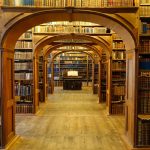
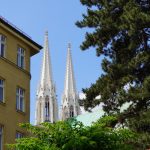
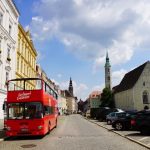
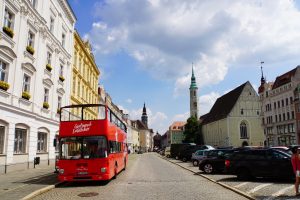
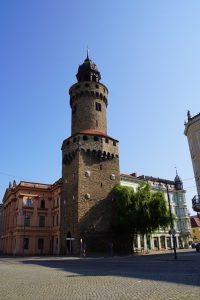
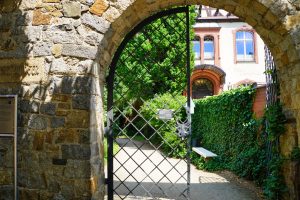
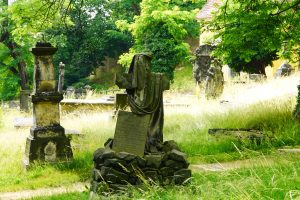
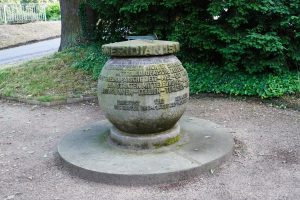
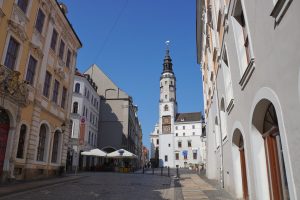
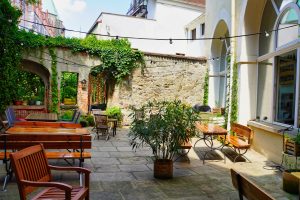
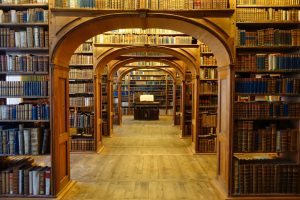
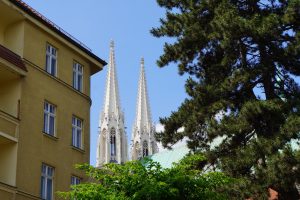
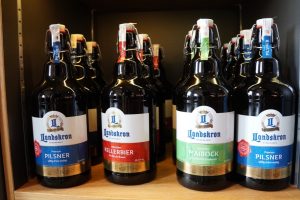
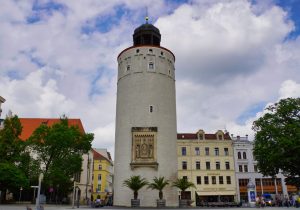
Leave a Reply